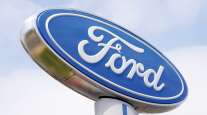Staff Reporter
Average Price of a Gallon of Diesel Slips 0.5¢ to $2.971

[Stay on top of transportation news: Get TTNews in your inbox.]
The U.S. average retail price of diesel dropped 0.5 cent to $2.971 per gallon, the Department of Energy reported Sept. 9.
The price of diesel has fallen for nine consecutive weeks since July 15, when trucking’s main fuel cost $3.051 per gallon.
Diesel costs 28.7 cents less than it did a year ago, when it was $3.258, DOE said.
Two regions, the Gulf Coast and the Rocky Mountain areas, saw their respective average diesel price rise, with the Rocky Mountain average price rising the most — 0.9 cent to $2.933 per gallon.
Diesel fell the most in the Central Atlantic region, where it dropped 1.7 cents to $3.161 per gallon.
Diesel remains most expensive in California, where it costs $3.878 per gallon. It remains the cheapest in the Gulf Coast region, where it costs $2.745 per gallon, according to DOE data.
The average price of a gallon of gasoline also fell, by 1.3 cents to $2.550, making it 28.3 cents cheaper than a year ago.
The cheaper prices for gasoline and diesel come as oil dropped to a one-week low on Sept. 11. The drop was in part due to President Donald Trump considering easing sanctions on Iran that severely restricted the OPEC member’s ability to export crude, according to Bloomberg News.
Trump is preparing to meet with Iranian President Hassan Rouhani later in September, according to people familiar with the matter. Such talks would be unprecedented for an administration that made isolating the Islamic Republic a cornerstone policy, Bloomberg News reported.
The news canceled out any bullish movements oil traders were making.

In our first episode of RoadSigns, Season Three, we ask: How Can Trucking Take Fuel Economy to the Next Level? Hear a snippet from host Seth Clevenger, above, and get the full program by going to RoadSigns.TTNews.com.
On Sept. 11, West Texas Intermediate crude for October delivery settled down $1.65 at $55.75 a barrel on the New York Mercantile Exchange, the lowest close since Sept. 3. Brent for November settlement decreased $1.57 to $60.81 on the ICE Futures Europe Exchange.
Denton Cinquegrana, chief oil analyst at Oil Price Information Service, said demand for oil and a strong U.S. economy had traders ready to send oil prices higher, but the Iran news on Sept. 11 called back the bears. Iran is a major Middle Eastern producer of oil, but its supply has been restricted by sanctions.
Allowing Iranian oil to flow more freely could send prices lower in the future. That means for now, traders are sticking WTI between its recent window of $54 to $58 per barrel, Cinquegrana told Transport Topics.
Traders also are cautious about the worsening relationship between the U.S. and China, Cinquegrana said. Such tariff spats could dampen global growth.
And the DOE’s Energy Information Administration put out a Sept. 11 report cutting a global growth forecast for 2019, predicting new usage of only 890,000 barrels per day, down from a forecast made earlier this year of an extra 1 million-plus barrels used per day. Cinquegrana said the EIA’s forecast was significant.
“Growth expectations appear to be curbed,” Cinquegrana said. “That weighs on the market.”

Cinquegrana
Yet if oil climbs in price, it could increase already significant costs for trucking firms. That is why even equipment manufacturers are sensitive to the aerodynamics of their products.
Ryan Holt, general manager for Ex-Guard Industries, makes a number of grille guards for Classes 7-8 trucks.
The Des Moines, Iowa-based company has 180 employees and sells about 60,000 of its front-end products a year. To answer customer inquiries about possible fuel costs, Holt had his guards tested by MVT Solutions in Las Cruces, N.M. MVT tests the fuel economy of trucks on racetracks and highways.
MVT attached the guards to trucks and did testing on the roads.
“They found our series affected [fuel economy] by 0.01 percent, basically zero,” Holt said. “It was a good day.”
Ex-Guard uses a patented coating technology that helps air go around the guard, creating less drag, Holt said.




